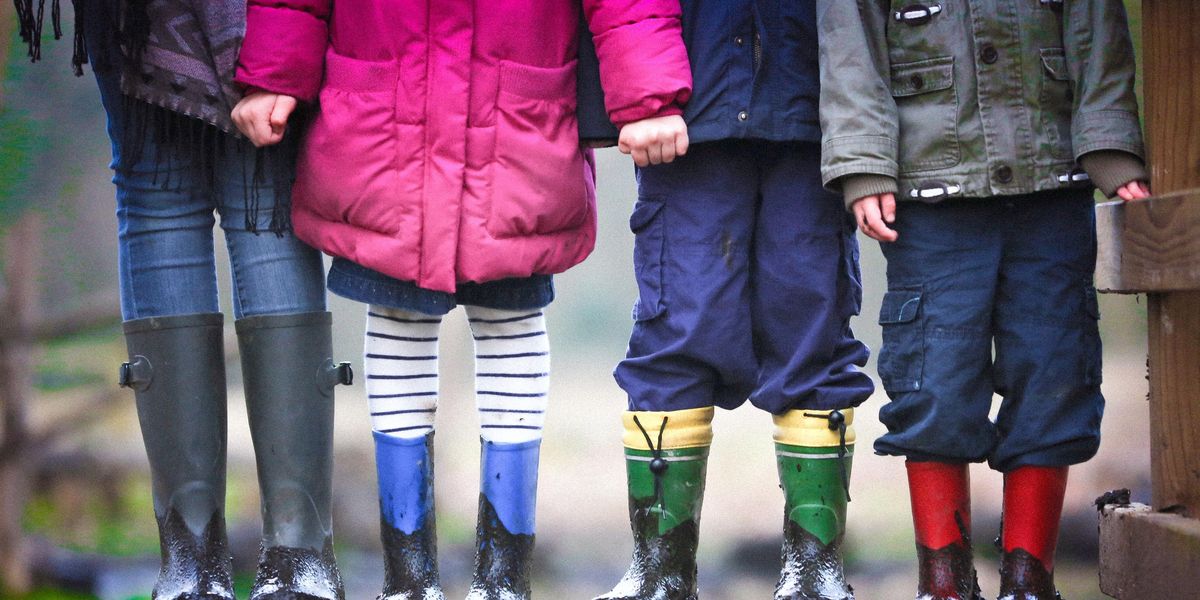
After a long, trying, and chaotic year, things are (slowly) getting back to normal. Malls are open. Restaurants are welcoming customers again — with many serving up hope alongside hors d’oeuvres — and employees across the country are returning to the office. This fall, our children will go back to school. But this return to “normal” is affecting the youngest members of our society in ways few expected. Case in point: Many children are struggling with separation anxiety, or an extraordinary fear of being separated from their parents or caretaker[s].
“All children and teens experience anxiety,” Sabrina Romanoff, a clinical psychologist and professor at Yeshiva University in New York, tells Upworthy. “It is a normative process of development… [however,] there has been an uptick in separation-related anxiety due to the pandemic.”
“Separation anxiety is when a child becomes fearful or worried when they are separated from their parent or caretaker,” Ben Barer — a licensed clinical social worker — adds. “The feelings that are commonly felt include excessive worry, nervousness, sadness, and loneliness.”
Of course, the response is — in many ways — unsurprising. Most children have been living under one roof for 17 months. They lacked structure, traditional schooling, playdates, and (in some cases) socialization and friends. Mommy and Daddy were all they knew. But as schools across the nation open their doors, and teachers welcome children back to class, fear is rising: fear of COVID, socialization, progress, and being alone.

Photo by Joshua Hoehne on
“Separation anxiety happens when someone becomes co-dependent on another person and becomes excessively nervous when they are not within their presence,” Jacqueline P. Wight, the director of mental health at DotCom Therapy, tells Parade. “It is common in children with their parents/caregivers and is known to become increasingly worse during times of stress.” Like now. The pandemic has been a major stressor for parents and children alike.
So how can you cope with separation anxiety? How can you help your child get a handle on their fears — and manage stress? According to Barer, there are numerous things you can do to ease your child back into a “normal” routine.
“Depending on the child’s age, there are several helpful strategies that can be implemented at the time of separation so the child will be able to cope better with his or her feelings,” Barer says. “For example, if your toddler is starting daycare, visiting the daycare beforehand and doing a tour of the facility can be helpful for the toddler, as this will not be an entirely new experience for them when they get dropped off. If your child is around elementary age, having discussions about what drop off might look like, what feelings the child might feel when being separated, and even parents sharing their own feelings can be reassuring for the child. It helps them learn that feelings of worry and nervousness are completely normal. And teens can benefit from conversations like this, too.”
“Talking to your child and providing them with encouragement and support is imperative,” Romanoff adds — regardless of their age.

Photo by Torsten Dederichs on
Of course, there are other things you should do, too.
“Develop a routine for saying goodbye to your child,” Wight suggests. “This will look different for each child, but think of special, loving ways to say goodbye when you will be separated. Be honest with your child about the plan. If you’re picking them up at the end of the school day, say it. With the best of intentions, parents and caregivers might be inclined to share a plan that is easier for the child to hear, but not necessarily the truth. However, honesty is best. If your child is experiencing anxiety about returning to school, be sure that your child socializes with friends beforehand in order to ease the transition. If there is a specific situation that causes the anxiety (ex. school drop off), get lots of practice in advance.” And prepare them now for “alone time,” i.e. it’s necessary to expose your child to being separated from you.
“It’s always best to take small steps at first,” Wight explains. “Identify an adult that the child feels most comfortable with and have that adult watch the child for a short amount of time. If that goes well, slowly increase the amount of time. If there are one or two friends that your child is most eager to see, set up a time for them to play/hang out when you will not be present. Make it a time-limited activity and share the plan with the child so that they know what to expect. And if, at any point, the child struggles with an experience, consider trying that experience again with some more preparation, problem-solving, etc. prior to moving on to new experiences.” In short, take things easily. Slowly. Baby steps.
That said, while parents and caregivers can approach this issue with the best of intentions and the best (and most thorough) of plans, sometimes children need more. Parental support isn’t always enough, especially in cases of anxiety — when you’re dealing with the effects of a mental health. If you feel your child isn’t responding to the aforementioned suggestions as you would like and/or if they are still experiencing extreme feelings of nervousness, apprehension, sadness, or fear, you may want to reach out for additional support.
“Parents do not need to wait until their child’s struggle feels like a crisis to get help,” Wight explains. “In fact, it’s actually best to proactively seek support. And while parents know their children best, there are qualified and thoughtful professionals that can help parents and their children navigate through challenging situations.”
